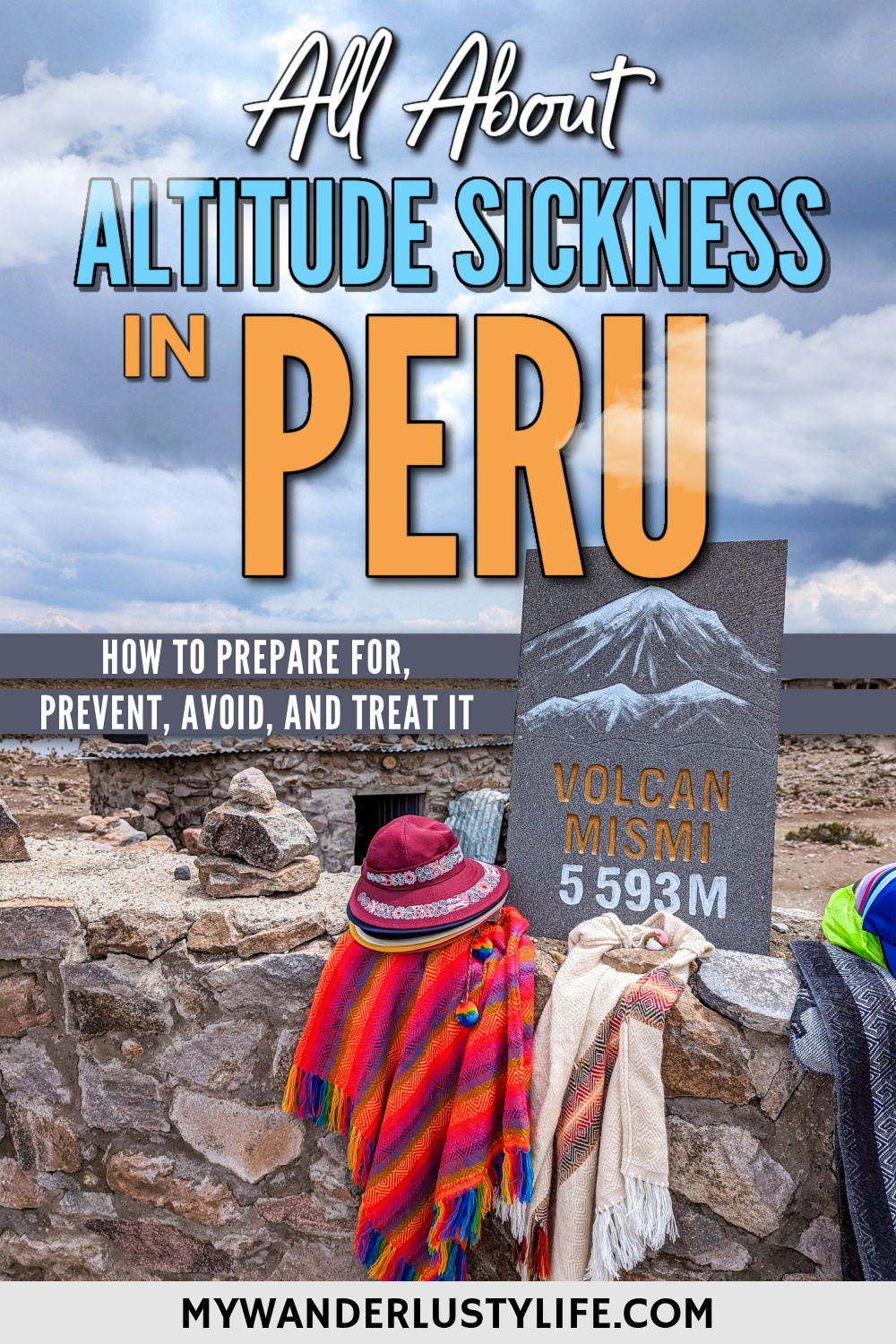Dealing with potential altitude sickness in Peru was the #1 thing I was most nervous about when I booked my trip for March 2024. I’d dealt with it in Mexico City a few years prior and, let’s just say, ‘twas not the good time I was hoping to have there. (If I’m gonna have the crushing hangover, I’d at least like to enjoy the tequila first. ‘Sall I’m saying.)
Knowing what lie ahead, I spent the months leading up to my trip researching everything I could on altitude sickness in Peru—how to prepare for it, how to avoid it, and how to treat it if it did get me. And the result? A rousing success! Shots for everyone! Other than one pretty wretched day, I’d say I survived Peru’s super high elevations like a true travel champ. *pauses for applause*
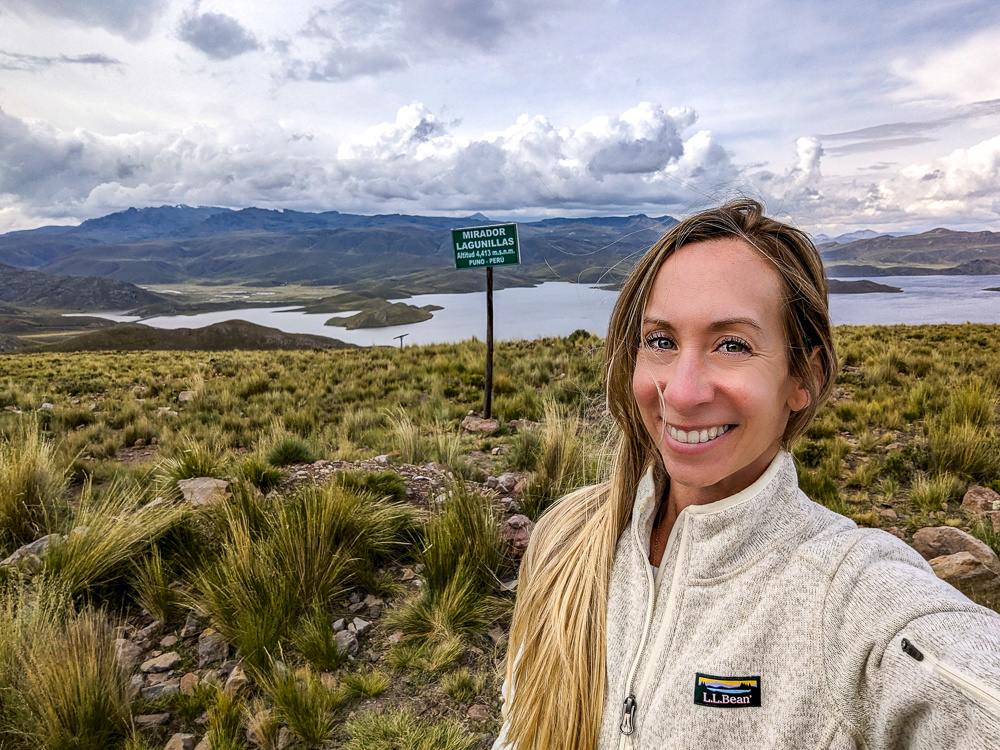
Now, I’d love to help you do the same. Consider this post my complete guide to dealing with altitude sickness in Peru. It has all the stuff you need to know on preparing your body for it, avoiding it when you’re here, and how to treat it should it happen to you.
Important note (!!!) I am not a medical professional (clearly) and I am not giving you medical advice. I’m merely relaying my personal experiences with altitude sickness in Peru and passing on the suggestions that were handed down to me. Please consult an actual doctor regarding how traveling to high elevations will affect you.
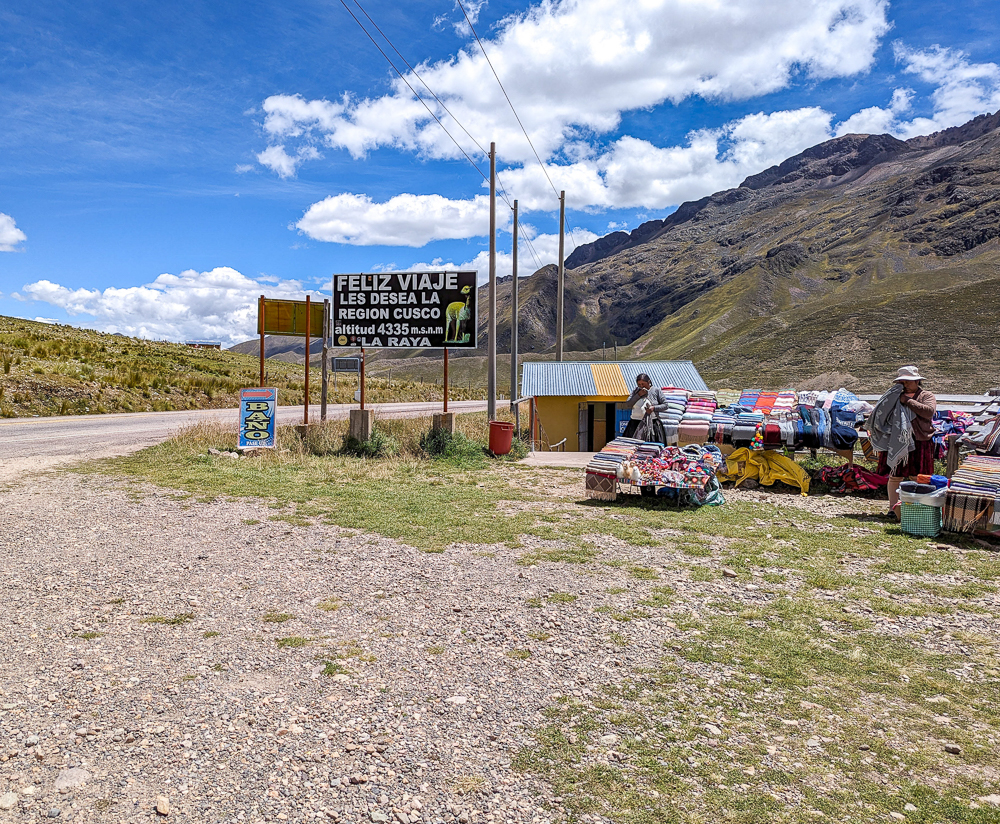
What is altitude sickness
Altitude sickness is a temporary condition that happens when you travel to really high elevations where the air is thinner and there’s less oxygen. The symptoms you feel are the result of your body struggling to adjust to decreased levels of oxygen. (This is why airplane cabins are pressurized!)
Altitude sickness typically occurs at elevations of 8,000 feet above sea level and higher (but Mexico City is only 7,349 and it still hit me hard there). It can also affect anyone–young, old, in shape, out of shape, otherwise perfectly healthy; it doesn’t matter. The only people it won’t affect are those who already live at these elevations.
Over time, your body will gradually adjust to functioning on less oxygen and symptoms will begin to wane. Altitude sickness is generally a mild condition that typically lasts only a few days. (Still, it is no bueno.)
However, higher elevations and their decreased oxygen levels can be a much bigger risk if you have any number of underlying conditions. Always play it safe and talk to your doctor before you travel.
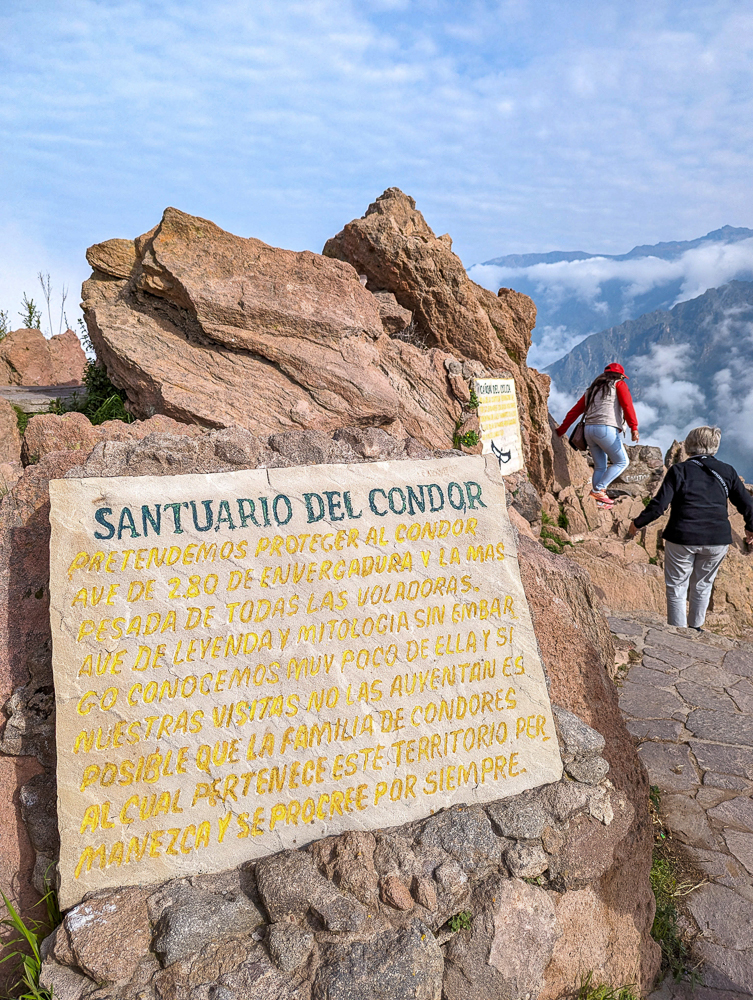
Signs & Symptoms of altitude sickness
Altitude sickness can affect different people in different ways, so what you experience may be different from that of your travel companions. Regardless, some of the common symptoms include:
- Headaches
- Dizziness
- Nausea
- Vomiting
- Fatigue
- Shortness of breath
- Difficulty sleeping
- Rapid heart rate

When I got altitude sickness in Mexico City, my symptoms came on very quickly. I was just walking down a sidewalk and suddenly was having trouble walking more than a few steps before I was completely out of breath. I was also dizzy, slurring my words and everything felt slow, like I was really drunk or something (which I was not, booo).
Soon after that I developed a headache and felt just generally sick and super fatigued for the rest of the day. I stayed curled up in my room until the next day and had trouble sleeping all night. It was not fun. My husband went out and had mucho tacos without me.
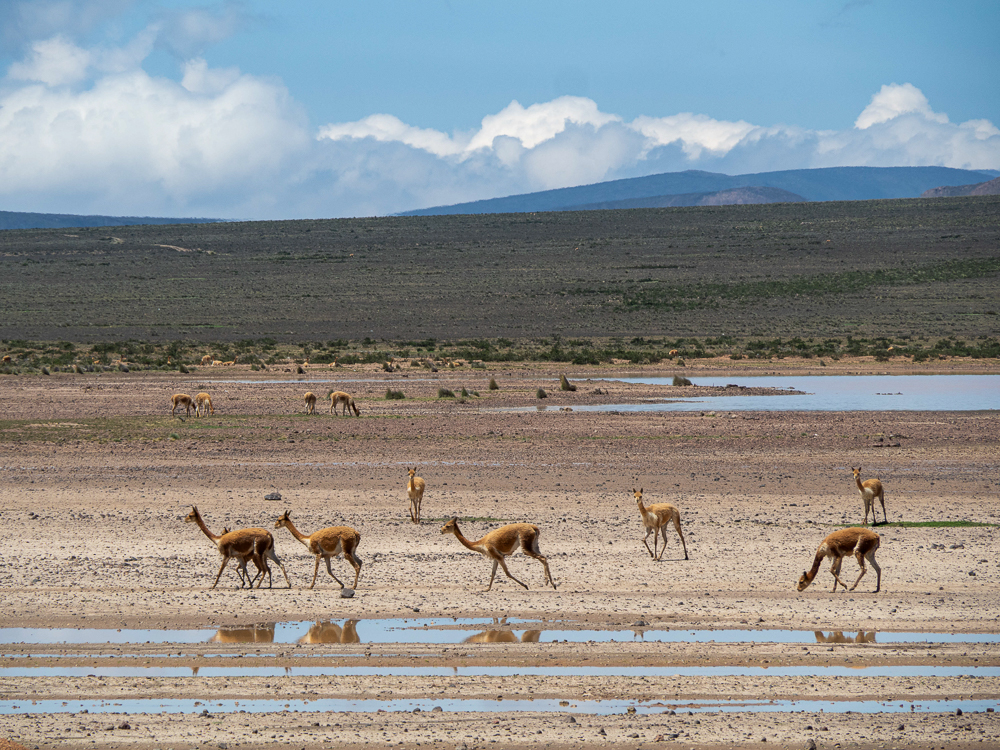
The one day I experienced altitude sickness in Peru, my only symptom was a headache, although a really bad one. One of the worst of my life actually. It was excruciating just to try to move or even just walk. (And I am no stranger to getting sick while traveling abroad.)
If your symptoms get any worse than these – like tightness or pain in your chest, inability to walk, confusion, significant shortness of breath – definitely seek emergency help. You could have a related but more serious condition known as HACE (High-Altitude Cerebral Edema) or HAPE (High-Altitude Pulmonary Edema).
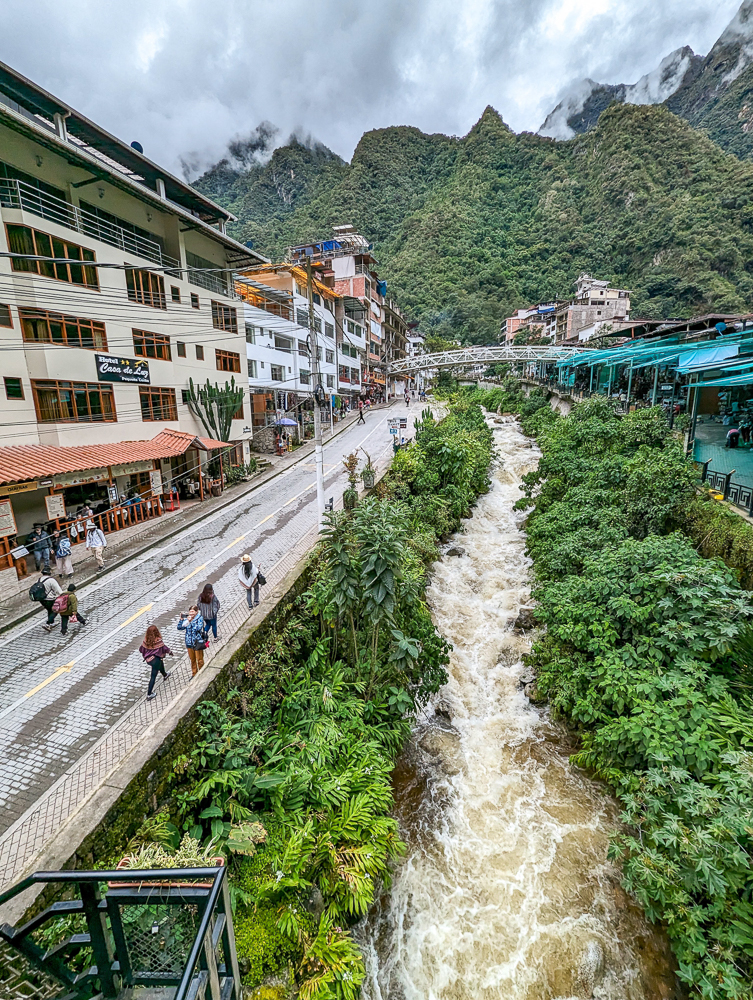
Altitude sickness in Peru: Why?
I’ve personally lived at sea level my whole life, so after my experience in Mexico City I’ve been extra cautious about elevation when I travel. Peru is a pretty popular tourist destination but not enough people talk about the altitude risk (in my opinion at least). Everyone talks about Machu Picchu and Rainbow Mountain and ceviche, but not the loss of oxygen required to visit these places!
The reality is that Peru’s high elevations are a significant factor to any visit. Don’t find out about this the hard way! It isn’t just something you might experience or something that only affects “old” or “out of shape” people. Or something you can “worry about when you get there.” Preparing for altitude sickness in Peru should be a real part of your travel planning. Here’s why…
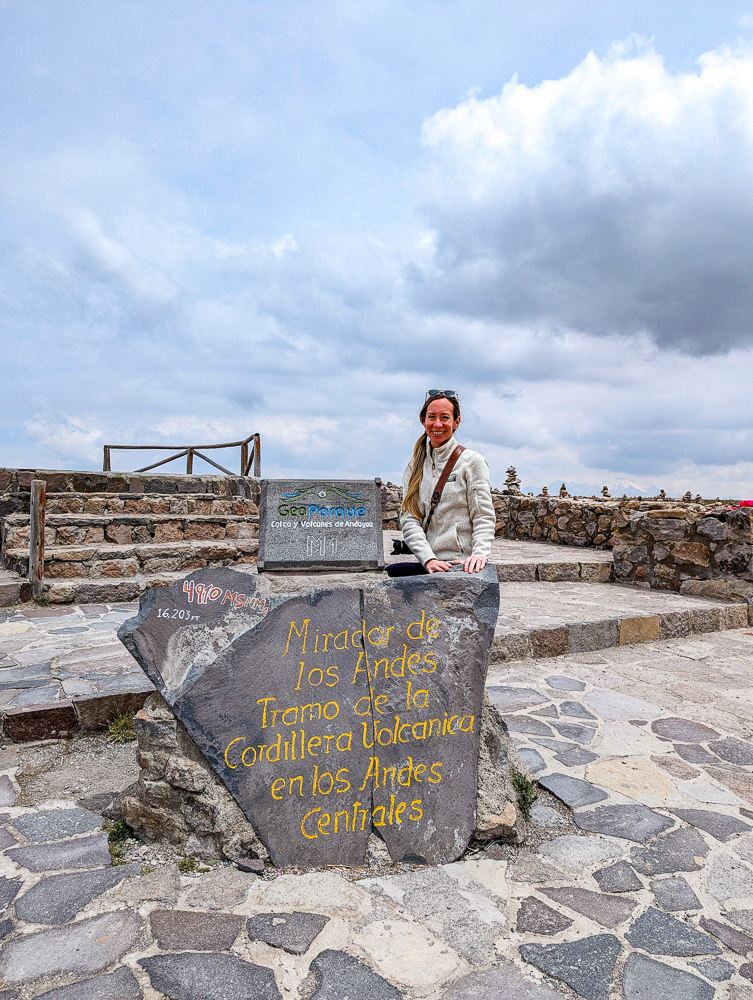
Elevation of Peru cities
From lowest to highest, here are the elevations of some of Peru’s most popular tourist destinations:
- Iquitos / Amazon rainforest – 341 feet (106 meters)
- Lima – 528 feet / (161 meters) Lima is on the Pacific coast and only barely above sea level.
- Puerto Maldonado / Amazon rainforest – 600 feet (183 meters)
- Nazca – 1,706 feet (520 meters)
- Aguas Calientes – 6,692 feet (2,040 meters)
- Arequipa – 7,661 feet (2,300 meters)
- Machu Picchu – 7,972 feet (2,430 meters)
- Ollantaytambo – 9,160 feet (2,792 meters)
- Cusco – 11,152 feet (3,400 meters)
- Puno / Lake Titicaca – 12,556 feet (3,826 meters) Lake Titicaca is the highest navigable lake in the world.
- Rainbow Mountain – 17,060 feet (5,200 meters)
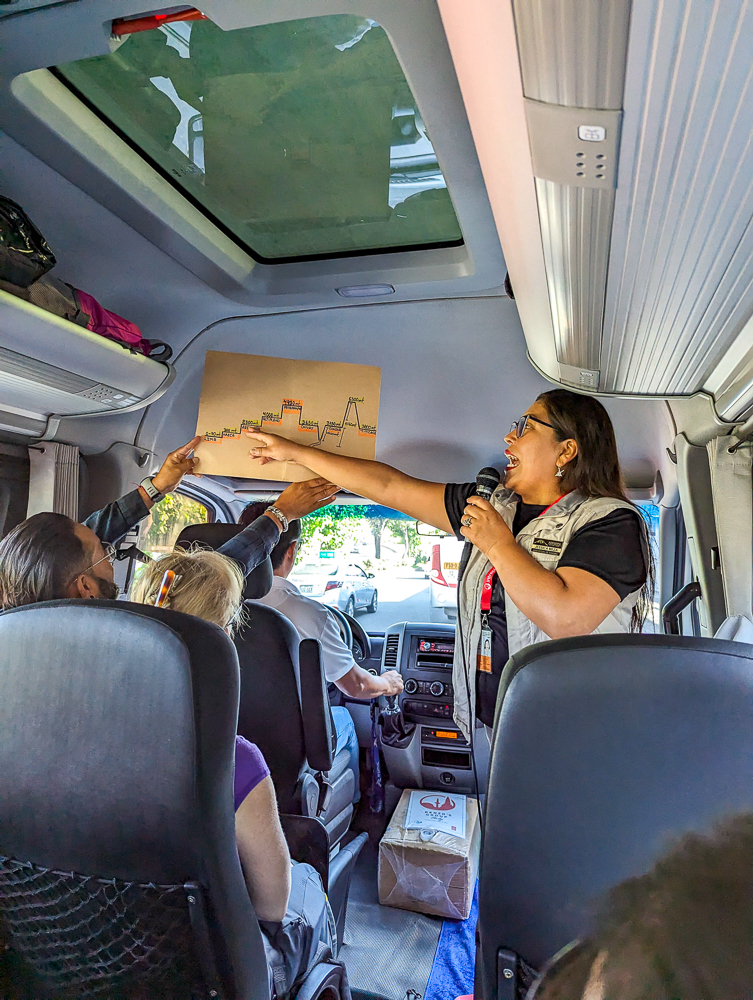
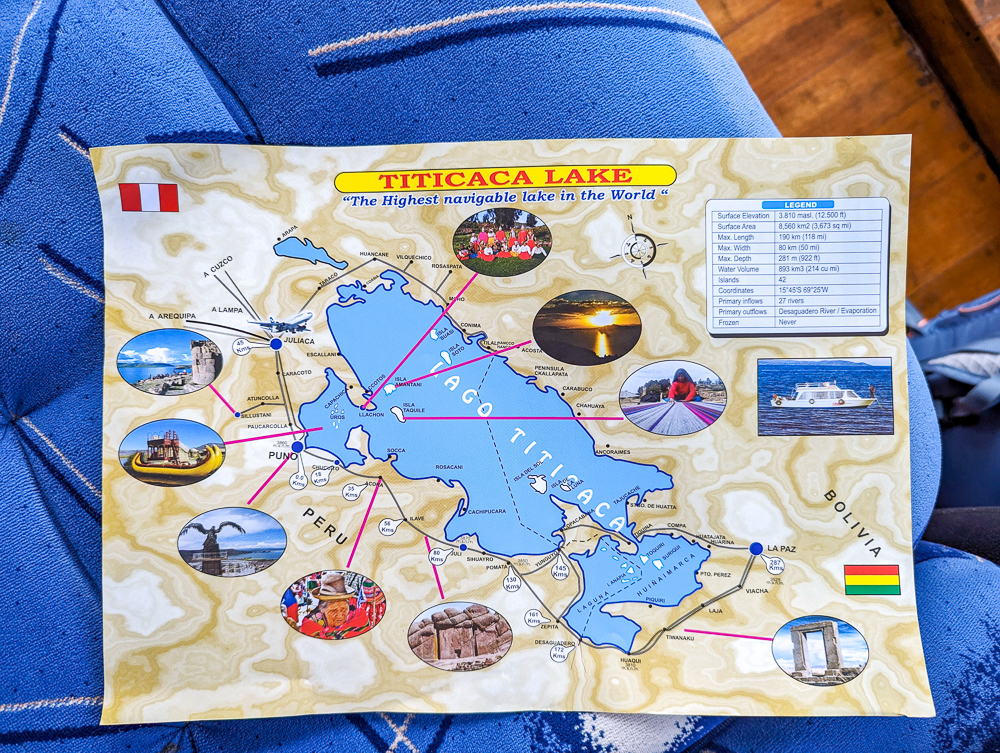
And here are some comparable world landmarks to help put Peru’s high altitudes into perspective:
- Denver, Colorado – 5,280 feet (1,609 meters)
- Mount Fuji – 12,388 feet (3,776 meters)
- Mont Blanc (highest mountain in the Alps) – 15,777 feet (4,807 meters)
- Denali (highest mountain in the US) – 20,310 feet (6,190 meters)
- Mount Everest (highest mountain in the world) – 29,032 feet (8,850 meters)
- Everest Base Camp – 17,600 feet (5,364 meters)
Hiking to Rainbow Mountain in Peru is on the same level as hiking to Everest Base Camp… and no one’s talking about that. That’s insane!
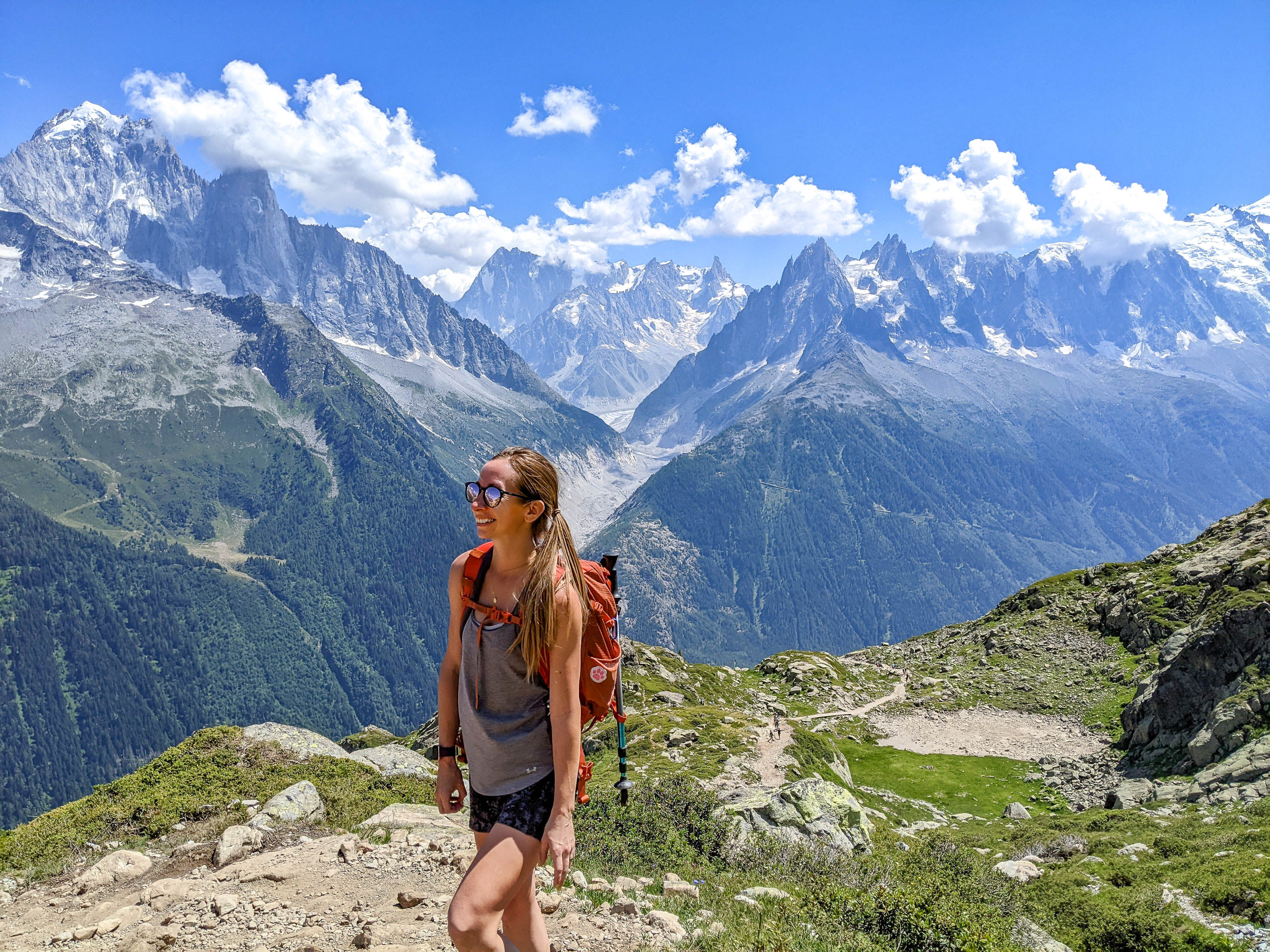
How to prepare for Peru’s high altitude
As with most illnesses, the best treatment for altitude sickness in Peru is prevention. Anticipating what your body will experience and prepping it before your trip will go a long way. This was huge for me considering I live at sea level (Boston). My body functions on only obscene amounts of oxygen; I’d need to prepare it for a deficit.
Training for high altitudes
It’s true that when you live at low elevation there’s only so much you can do to prepare your body for an oxygen deficit, but there’s not nothing. Here are the top recommended suggestions:
- Altitude training – My thoughts on this below.
- Aerobic exercise – The absolute most important thing.
- Breathing exercises – They’re not for everyone.
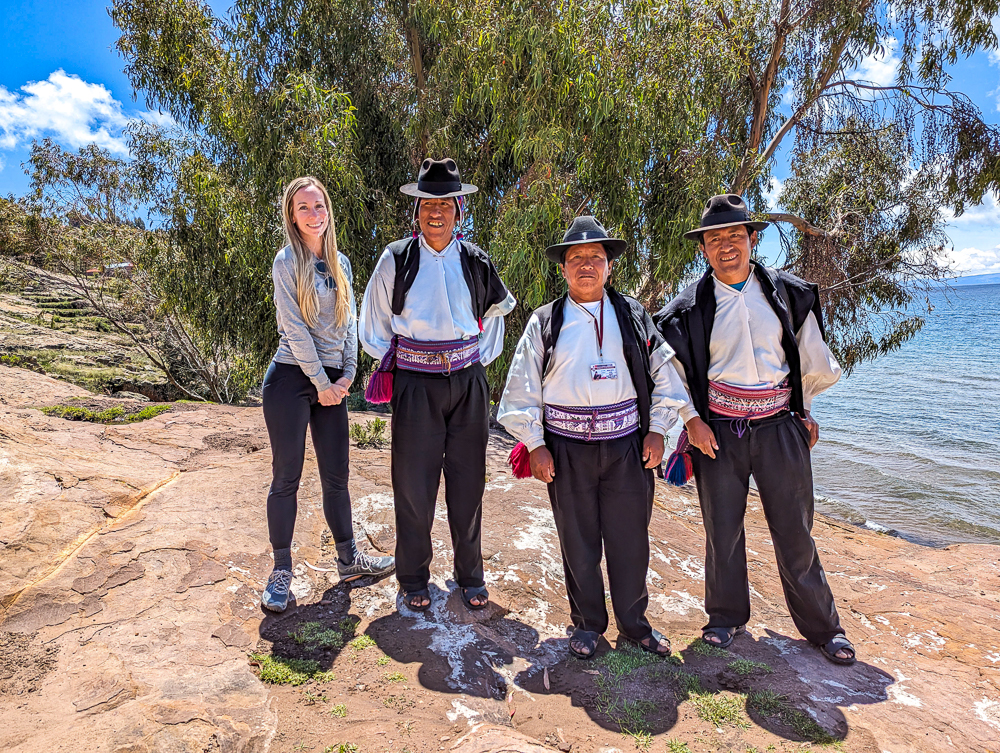
Altitude training
If you look up how to train for high altitudes, you always see the same thing: “Spend more time at elevation.” No shit? You don’t say!
For my trip, I was specifically searching for how to train for hiking at higher altitudes since I’d be hiking the Inca Trail while here. The answer for that, apparently: “Start doing regular high elevation hikes.” No. Shit.
But guess what? There aren’t any mountains near me! If you live in an area where you can do regular hikes of 10,000+ feet, then you probably don’t even need to be reading this post in the first place. This is really the stupidest, most obvious piece of advice if you ask me.
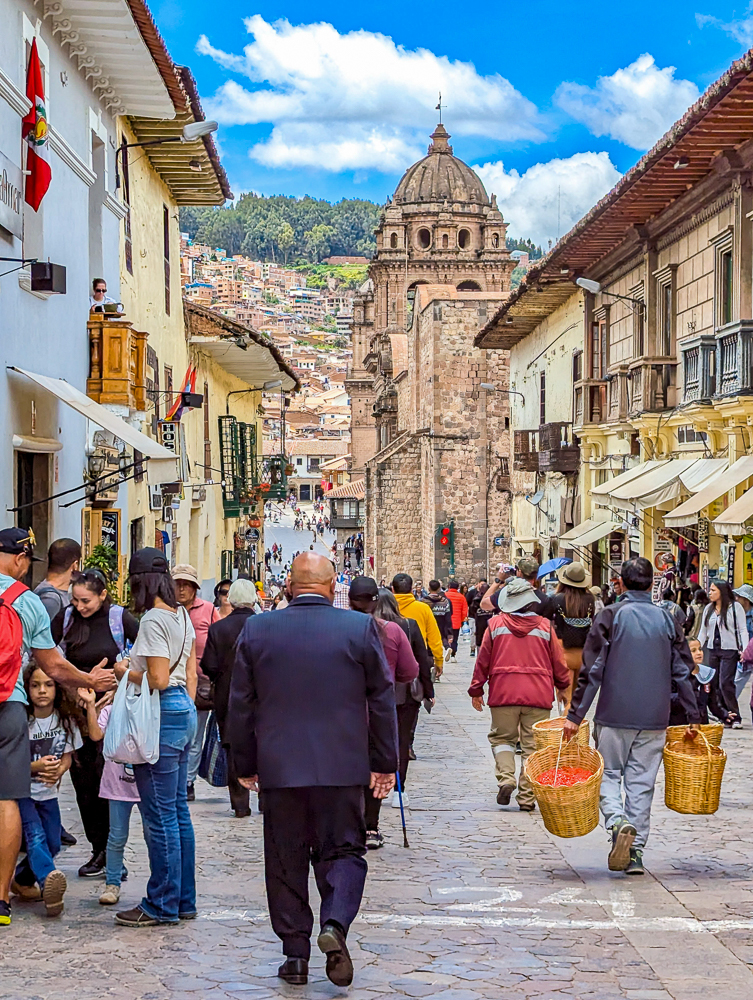
Aerobic exercise
The most widely recommended step to preparing your body for altitude is aerobic exercise to improve cardio function and increasing lung capacity. Focusing on this has worked wonders for me where high altitude is concerned.
The three most important aspects of aerobic exercise to focus on to prepare for altitude sickness in Peru are:
- Longer durations – Maintaining a low-to-moderate intensity for a longer period of time (in the neighborhood of 45 minutes or more)
- Increased intensity – Increasingly challenging yourself in terms of difficulty
- Regular activity – Don’t just do this one day a week; try for three or more.
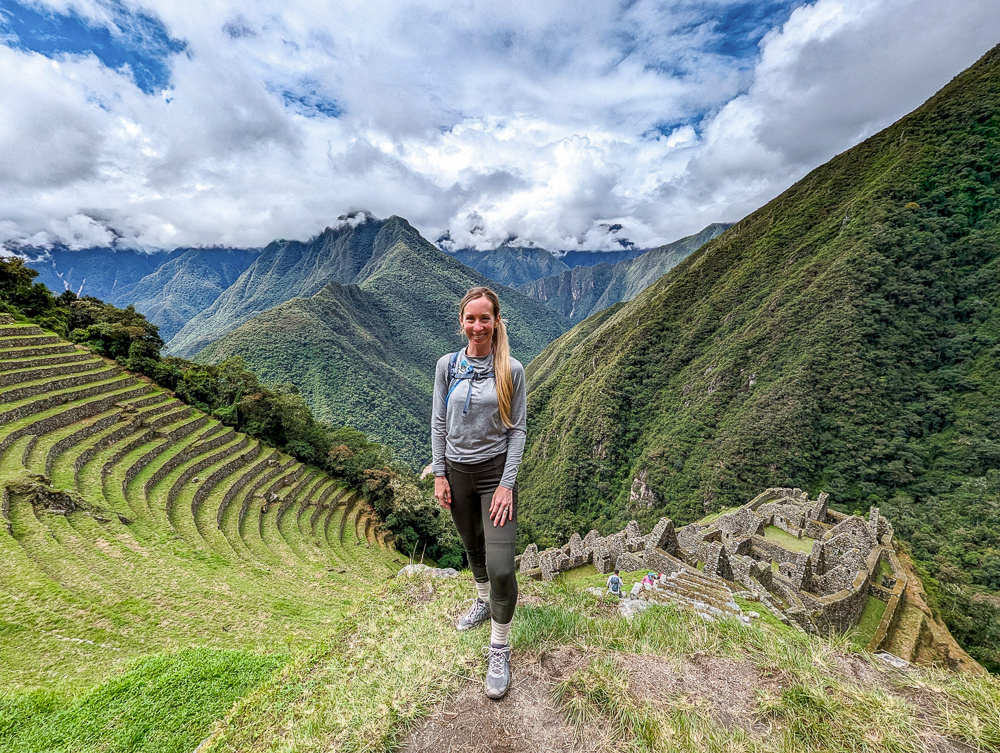
For me, adding all these up looked like:
I visited Peru in March 2024 but began training for it in December 2023 just after I booked my Intrepid Peru tour. I usually focus on weight training, but for this I switched completely over to an all-cardio regimen where I focused on 50-min treadmill sessions 4 days a week.
Given that my aerobic capabilities were pretty much zilch, I started out slow on the treadmill. By February I was completing 3 miles each day. Most of that was running on flat road, but a good chunk of it was power walking on an incline.
Because I was training in the winter in Boston, this was my go-to workout regimen. For you, it could also be biking, jogging outdoors, swimming laps, or whatever you call what you do on the elliptical machine.
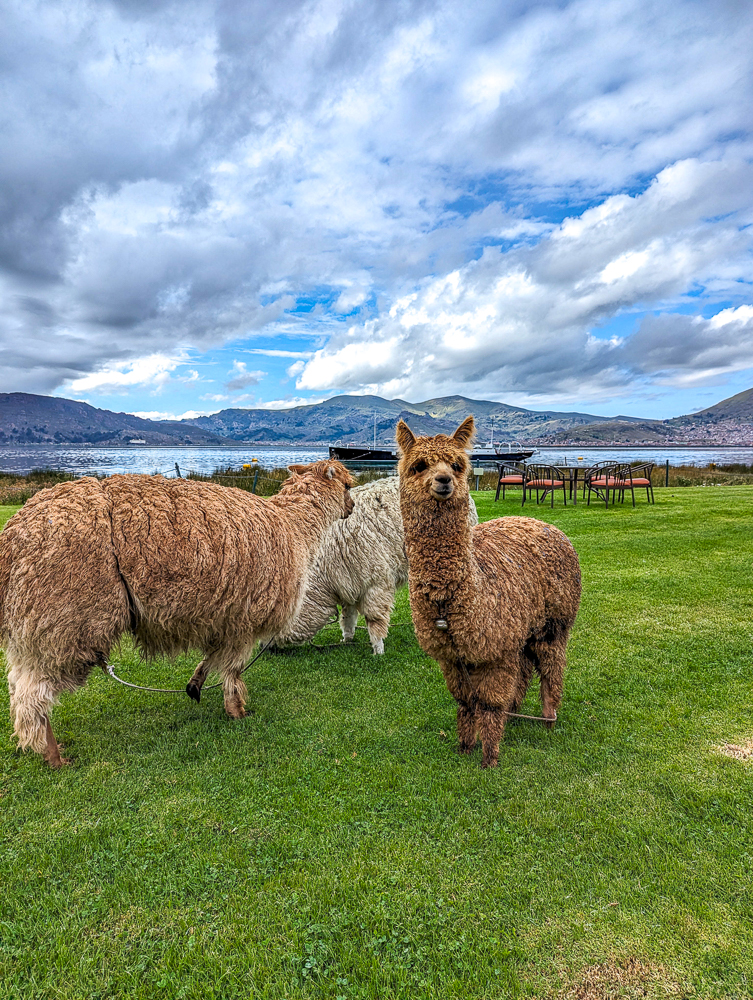
How to progress
The more you do this, the better at it you’ll get. I never dreamed I’d be able to run 3 miles a day. Literally, when I started, I couldn’t jog more than 15 seconds without feeling like I was dying. You will get better!
As you improve, your aerobic exercise regimen will demand progression. And when it does, remember this: Focus on increasing your duration, not your intensity. For example, as you get better at running, instead of trying to run faster, focus on running farther/longer at that same intensity.
Aerobic exercise is undoubtedly the most important aspect in working to prevent altitude sickness in Peru. The better your aerobic capacity, the better you’ll do in areas of decreased oxygen.
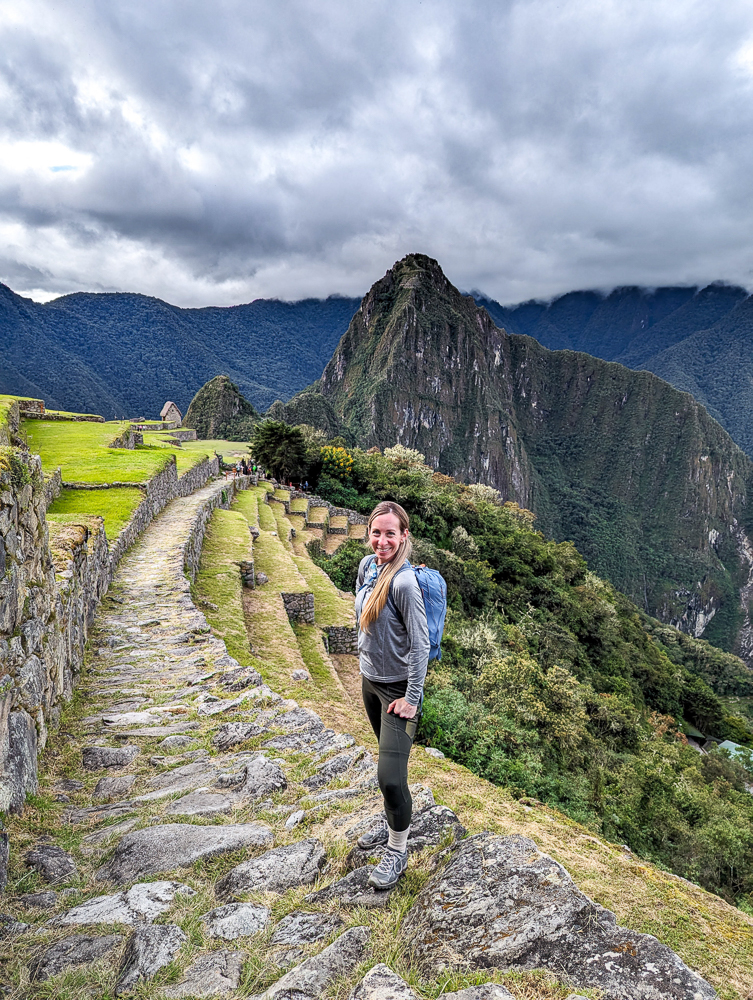
I’m a believer
This first time I visited Mexico City and had my first experience with altitude sickness, I hadn’t done any kind of preparation. My second visit to Mexico City was just 5 months later. In that time, I doubled down on my aerobic exercise and focused on all things cardio. When I returned 5 months later, I had zero issue with altitude sickness. I have been henceforth convinced of the power of aerobic exercise in dealing with altitude.
Breathing exercises
Many experts recommend certain breathing exercises to prepare your body for high altitude. I personally haven’t tried any of these, but if you have the patience and self-awareness for things like meditation, you’ll probably benefit from them. Add some research on the following topics to your travel preparation: (This article has a brief summary of each.)
- Diaphragmatic Breathing
- VIHT (Voluntary Isocapnic Hypoventilation Training)
- Pursed Lip Breathing
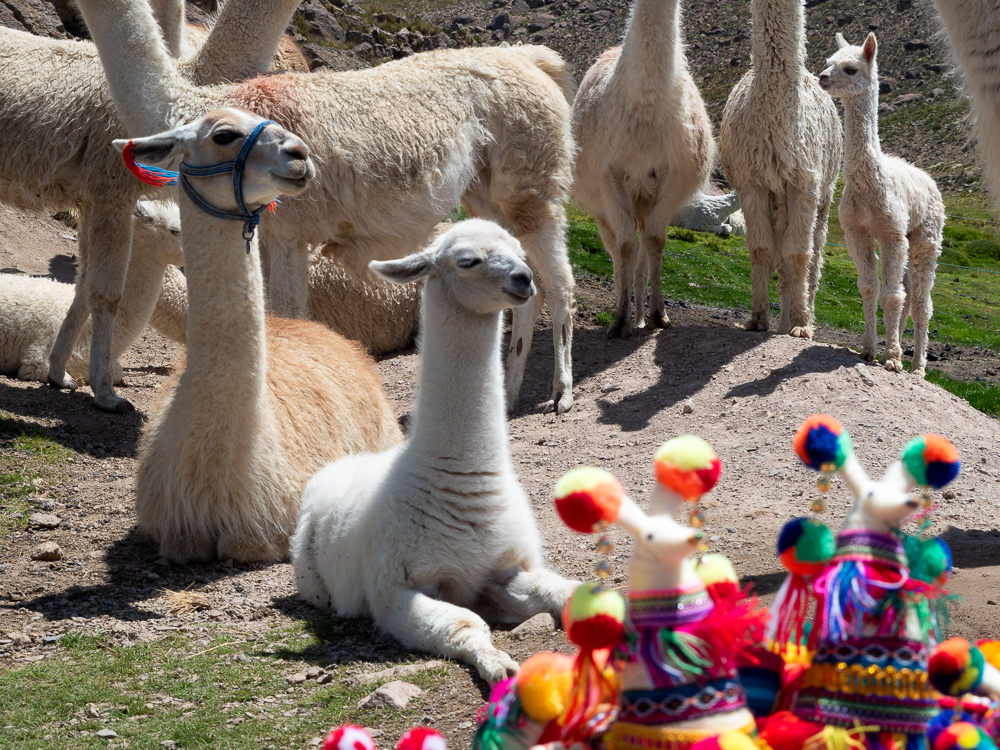
How to avoid altitude sickness in Peru
Altitude sickness can affect anyone, anytime. Building up your aerobic capacity will definitely help, but there are still some crucial steps you need to take to avoid making yourself susceptible. Such as:
- Acclimatization – The #1 most critical factor!
- Hydration – You must stay adequately hydrated at all times.
- Sleep – Get plenty of it.
- Avoiding caffeine and alcohol – I know… I know.
- Take it slow – Pack your zen.
Also read: Complete Peru Packing List: What to Pack for All Your Adventures
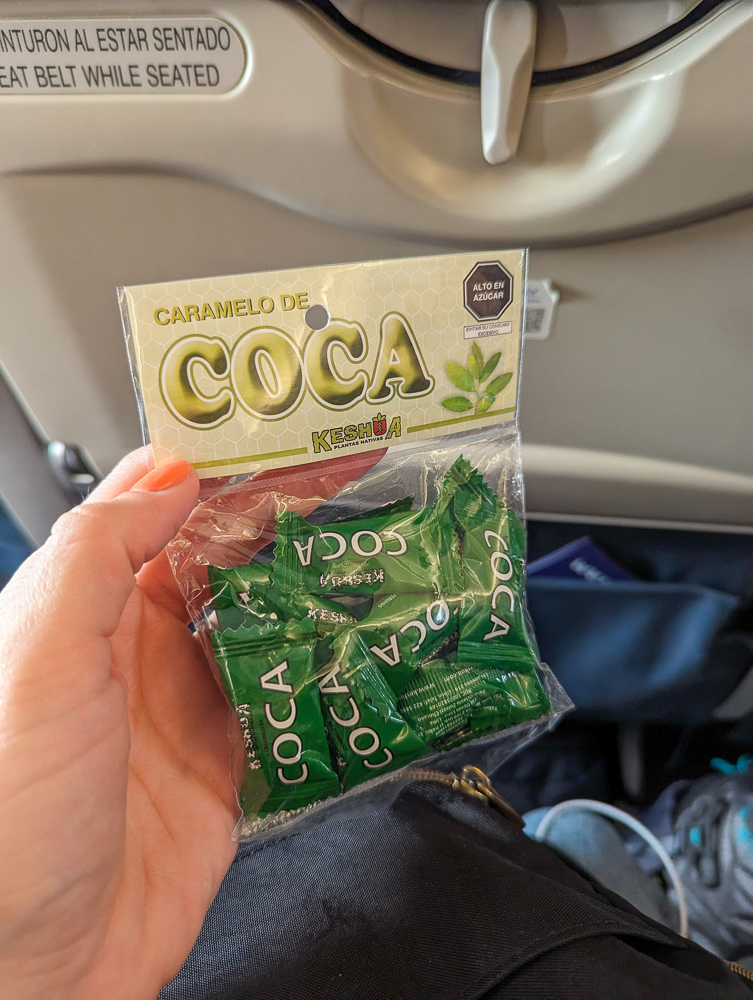
Acclimatization
Acclimatizing yourself to the high elevations is the Number 1 most critical factor in avoiding altitude sickness in Peru. You absolutely must ascend gradually or you will suffer the altitude sickness consequences. There are no exceptions here.
What this means is: Don’t fly to Peru and head straight to Cusco or Lake Titicaca on your first day where the elevations are over 11,000 feet. Instead, fly to Peru but take a few days to work your way to Cusco or Lake Titicaca, visiting cities along the way with gradually increasing elevation.
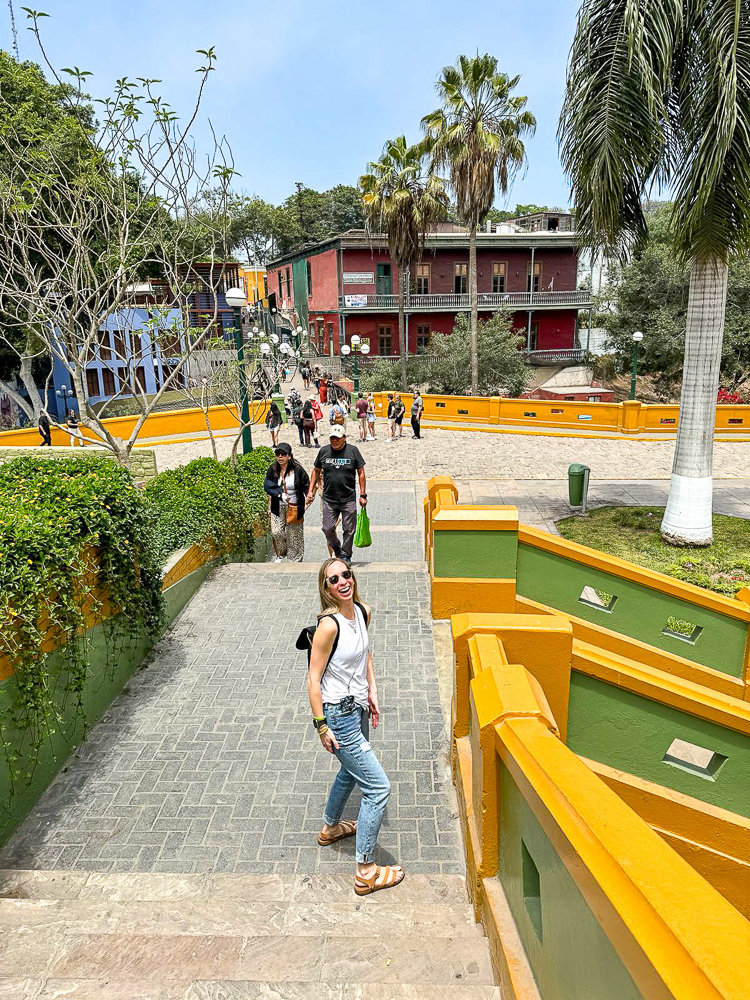
This may look like:
- Flying into Lima and spending a day here.
- Then moving on to Arequipa for a couple of days.
- Then perhaps a couple of days at Aguas Calientes and Machu Picchu.
- And then finally visiting Cusco.
- And only after a couple days in Cusco should you venture off to Rainbow Mountain where the elevation is almost 18,000 feet.
This doesn’t ensure you won’t suffer from altitude sickness in Peru at least a little bit, but you should still be able to function quite nicely. Flying straight from Lima to Cusco and attempting to hike Rainbow Mountain could very well put you in the hospital.
Your body needs time to adjust to functioning with less and less oxygen, regardless of how much you trained for this trip. This is truly a non-negotiable travel tip.
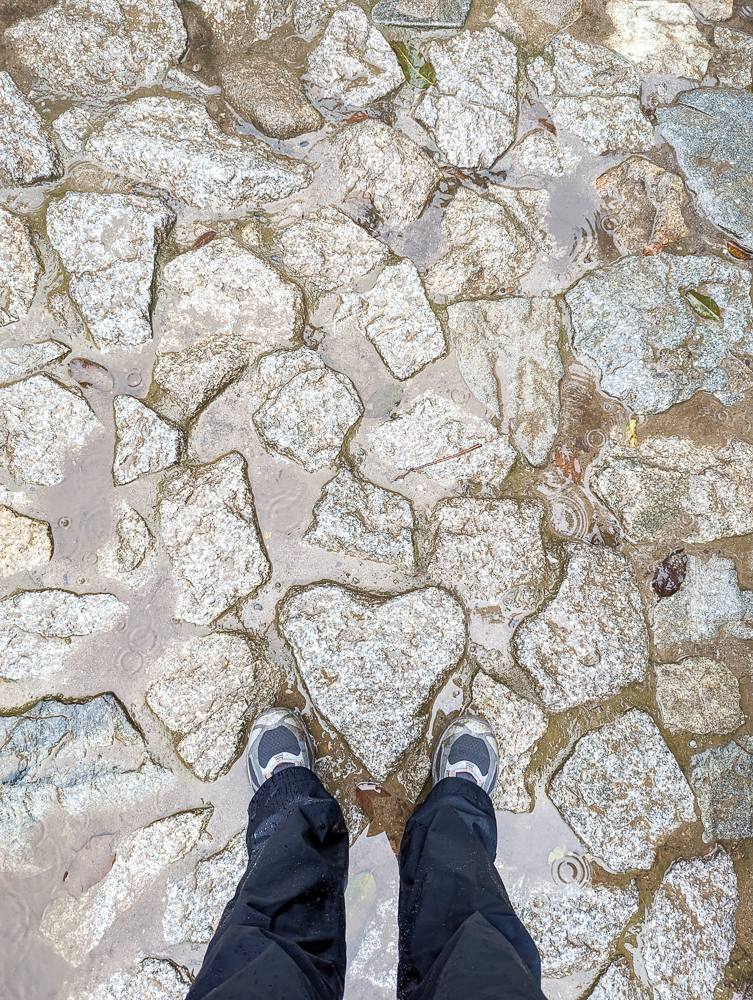
Hydration
You must stay hydrated while traveling at high altitude. It’s been found that your body loses water twice as fast at high elevation than it does at sea level. That’s a lot, especially if you have a hard time staying properly hydrated as it is.
Bring a refillable water bottle with you and refill it as often as possible. Really, chug that water like you’ve never chugged it before.
I was lucky that on my Intrepid Peru tour, our tour leader had a huge supply of drinking water for us in the van and at all of our hotels. He also pushed and pushed and pushed for us to drink it. Thankfully, we were also able to make many pit stops on our driving days.

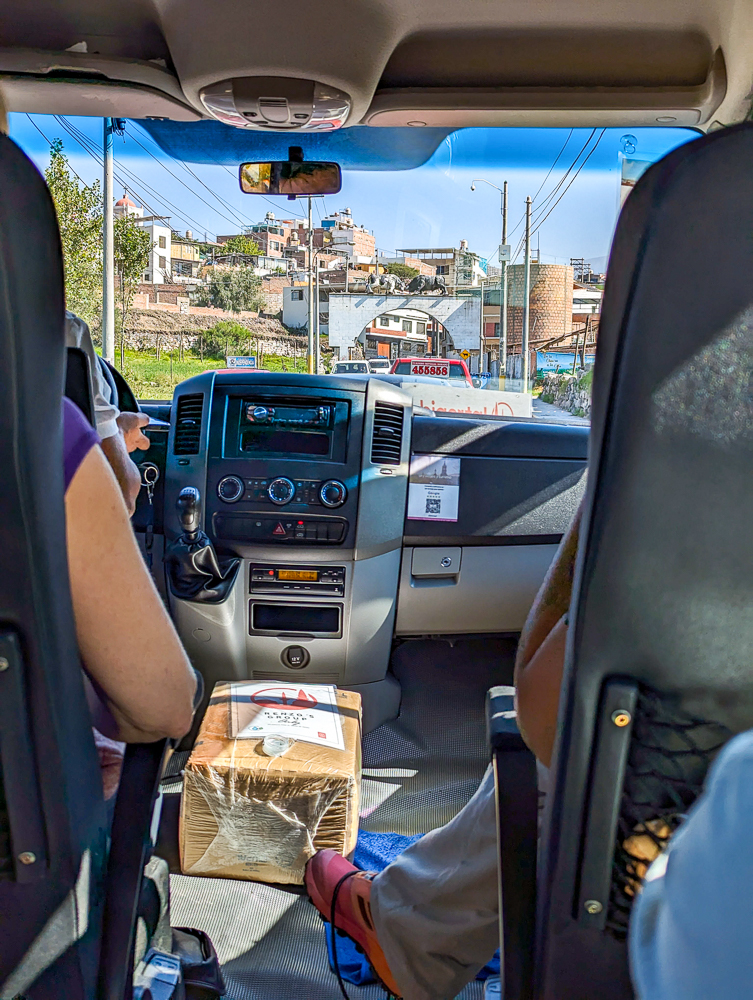
Sleep
Like you’ve already heard a thousand times – sleep is super important and you must get enough of it. Luckily, we were so busy with so many activities during our Peru tour that we were always exhausted by the time we hit the bed. Do your best to prioritize getting enough sleep here.
Avoid caffeine and alcohol
I know, right? Why even go on in such cruel world? OK but really, the problem is that both caffeine and alcohol contribute to dehydration. Your body is already struggling to stay properly hydrated, so don’t put any more undue stress on it.
Both caffeine and alcohol also affect your ability to get a good night’s sleep–something else you need a lot of to avoid altitude sickness in Peru.

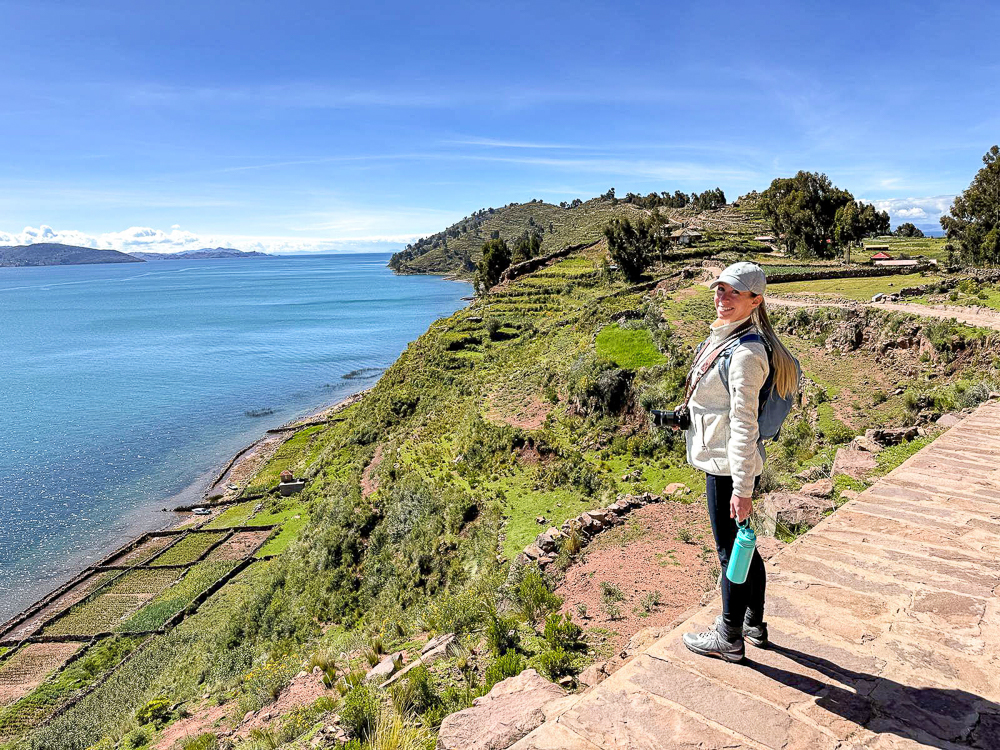
(That being said, the only day in Peru that I suffered from altitude sickness was our day at Lake Titicaca where the elevation is over 12,000 feet. I had one of the worst headaches of my life and even though I’d been taking ibuprofen all day, it never got any better.
That is, until my friend Amanda suggested I drink a Coke at lunch. I did and, like magic, my headache disappeared. ‘Twas the only thing that saved me that day. I don’t drink caffeine on a regular basis, so we can rule out caffeine withdrawal. Do with that information what you will.)
Take it slow
I’m all for immediately heading out when I get to a new destination and fitting in as much as I can. But in Peru, you really need to take it slow. Work plenty of time for rest into your itineraries and maybe only plan a couple of chill activities each day. Your body is essentially working overtime here and you will feel the physical effects of trying to do too much too fast.
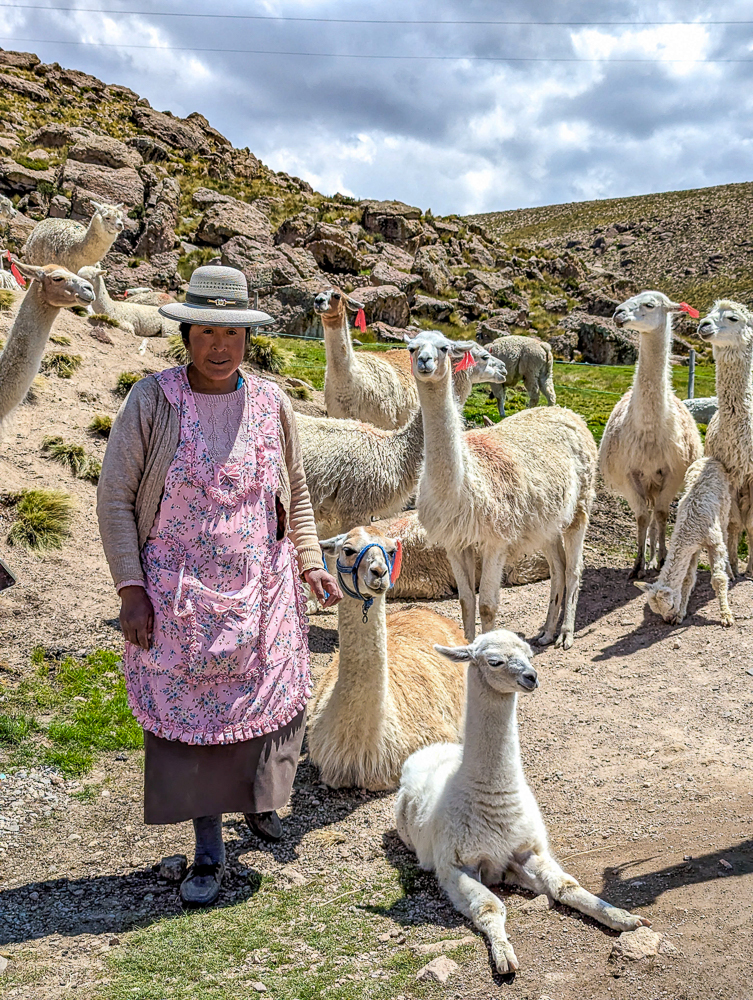
Medication for altitude sickness
One of the big pieces of advice everyone gave me before my Peru trip was to start taking “altitude sickness medicine.” What they were referring to is Diamox (or Acetazolamide)–a drug that supposedly prevents altitude sickness.
When I asked these people if they took it for altitude sickness in Peru, they almost always answered “No.” Only one of them said “Yes.”
Obviously, I looked into this. What I found was that it looked like the side effects would likely make me feel worse than the altitude sickness itself. Cue flashbacks to when I let my doctor talk me into using Scopolamine patches on my honeymoon. I felt far worse on these little slices of evil than I ever would have with just my plain ol’ motion sickness. Lesson learned. (I ended up curing my motion sickness permanently in the most interesting way though!)
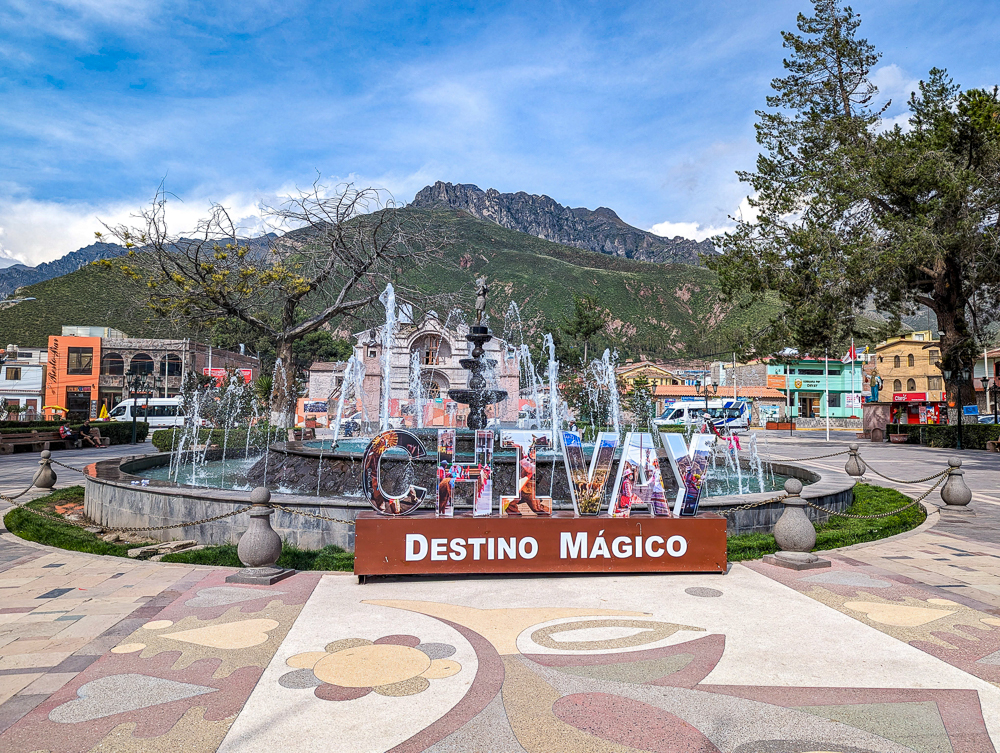
Does Diamox work?
So, I opted out of taking Diamox and stuck to the more natural preventative measures of exercise and developing good habits. That being said, the one person I know who did use this in Peru felt it did work for her and she couldn’t remember having any adverse reactions.
Some (of the older) people on my Peru tour were taking Diamox and they claimed to have felt mostly fine. We measured our blood oxygen levels every day and the people taking Diamox always had excellent numbers considering the circumstances.
However, they did tell me about some super weird and disturbing side effects they were having that totally would’ve sent me over the edge. Stuff like blurred vision and not being able to feel their fingers and toes. Umm, no thanks; I’d rather have the headache.
Obviously, drugs can affect different people in different ways so how you respond to Diamox could be quite different. Diamox is given by prescription only so get your doctor’s opinion on whether or not it might work for you and any potential risks. Get more info on Diamox here.
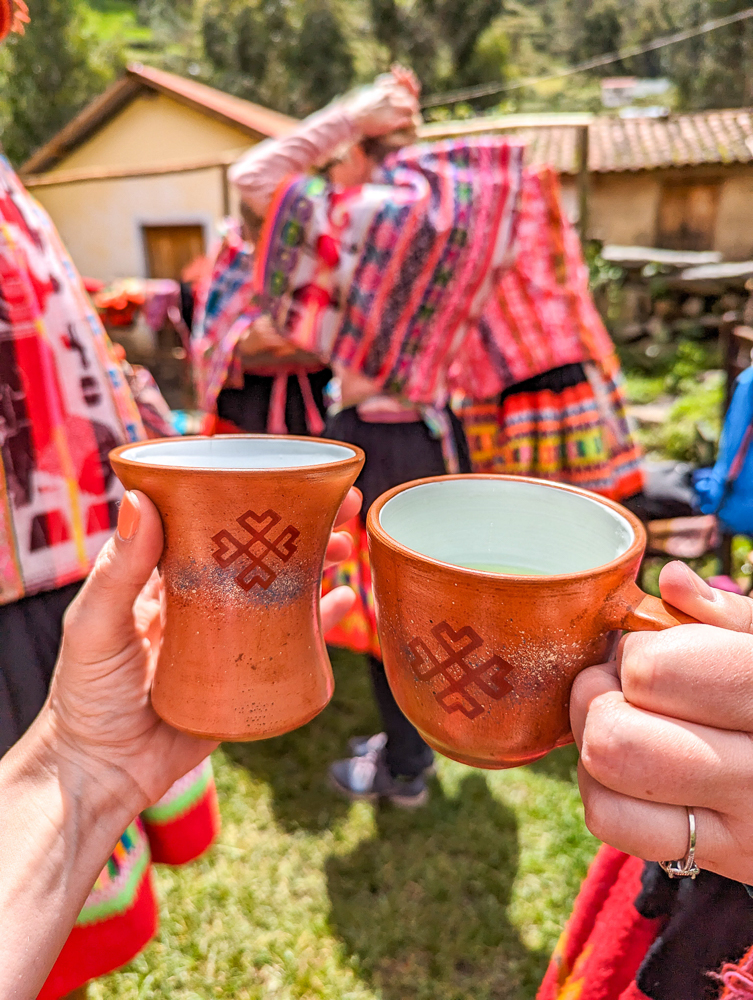
How to treat altitude sickness in Peru
Even if you take all the necessary precautions, there’s still a chance that altitude sickness in Peru could affect you. If you ascended gradually, have been staying hydrated, and have been getting enough sleep, your symptoms will likely be very mild.
If you have only mild symptoms, remedies include:
- Over-the-counter pain relievers like ibuprofen, acetaminophen, etc.
- Hydrate, hydrate, hydrate!
- Descend to a lower elevation; just straight-up leave where you are and go to a town at a lower altitude and give it a day or so.
- Rest, rest, rest!
- Wait it out.
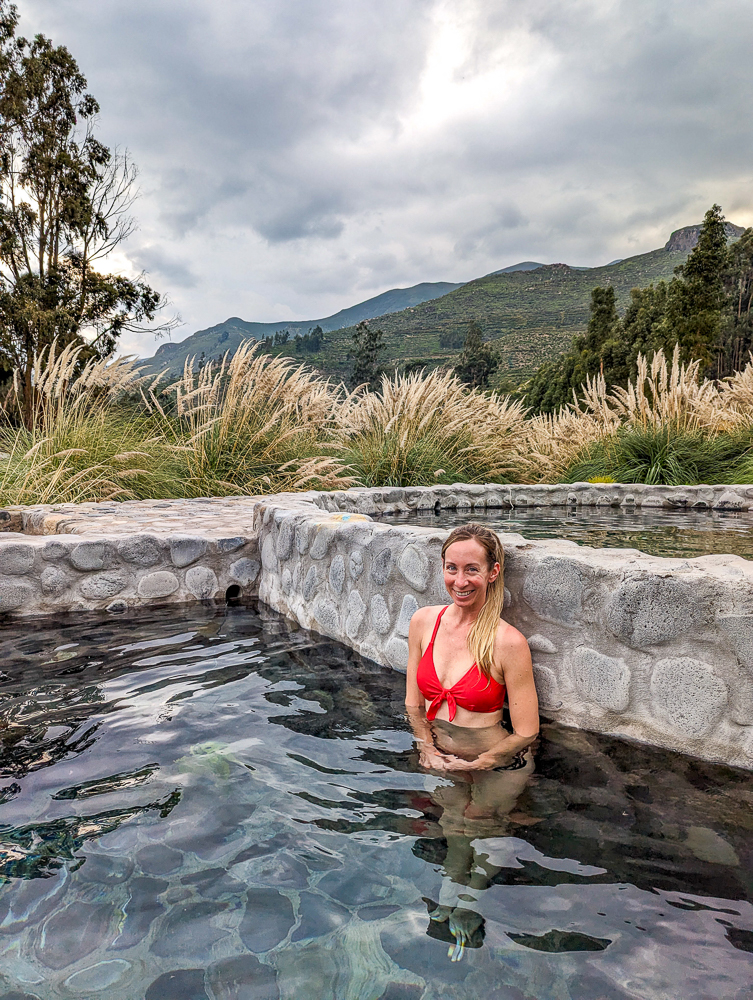
The good news is that, if you have only mild symptoms, your body will gradually adapt to functioning on less oxygen and your symptoms should subside within a few days.
If you have more serious symptoms–like inability to walk or blurred vision–you should definitely see a doctor. If you’re on a tour like I was, please don’t hesitate to alert your tour leader of your symptoms. These are not mild symptoms and can be the sign of much more serious conditions like:
- High-Altitude Cerebral Edema (HACE) where your brain begins to swell; or
- High-Altitude Pulmonary Edema (HAPE) where your lungs begin to fill with fluid
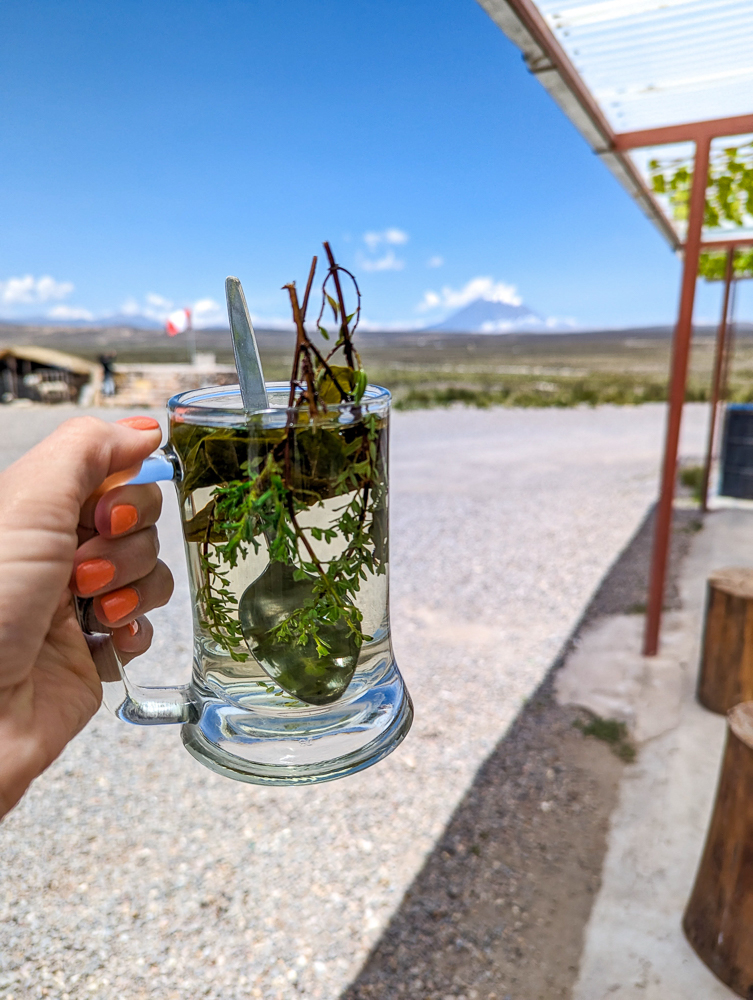
Peru altitude sickness tea
One thing you’ll hear about the most during your trip in regards to altitude sickness in Peru is coca tea. “Drink some coca tea!” “Chew some coca leaves!” Coca, coca, COCA.
I can’t speak to the accuracy of these claims, but any Peruvian will tell you that drinking coca tea or chewing coca leaves will prevent/cure your altitude sickness. Umm, it’s not that simple y’all. Don’t tell them I said this, but there’s no actual scientific evidence to back this up.
Did that stop me from drinking tons of coca tea or sucking on coca candy all the live-long day? Of course not. It’s still a sacred local tradition and I will always partake in those, science be damned. If drinking coca tea does work at all, it’s probably because it’s just a sneaky way to get you to drink more water. So, drink up.
Coca candies make great Peru souvenirs though. (The candies; not the leaves.)
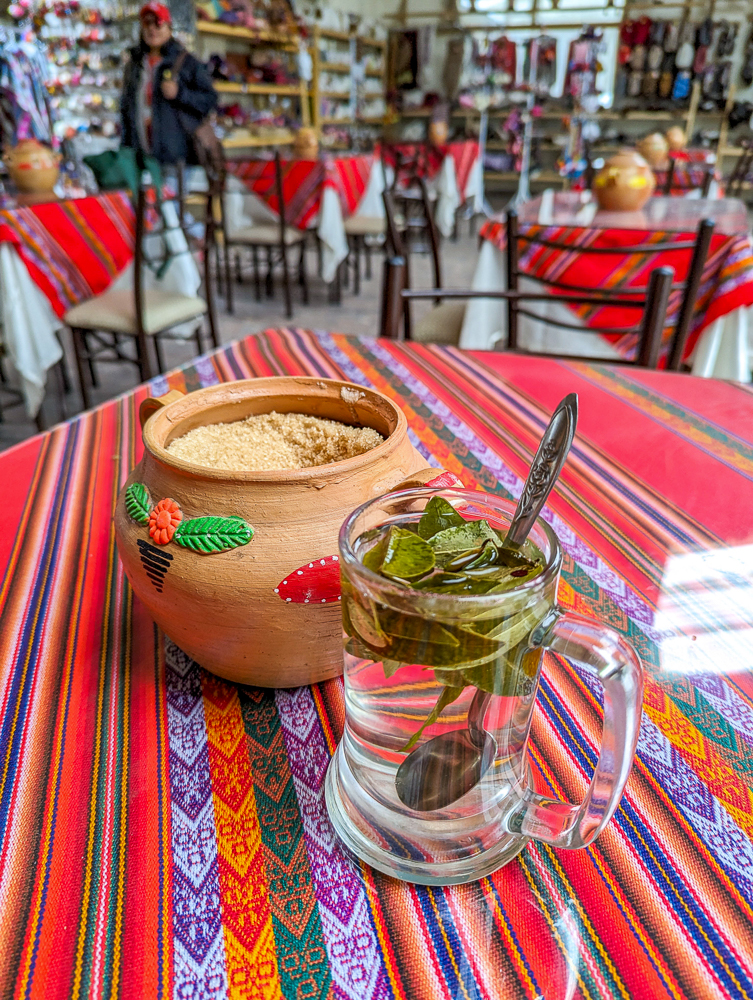
Important note: You can buy bags of coca leaves for pennies in Peru, but don’t try to bring any home. According to US Customs and Border Control: “It is illegal to bring coca leaves to the United States for any purpose, including for brewing tea or for chewing because they retain cocaine alkaloids. Cocaine, derived from coca leaves, is a Schedule II narcotic.” [source] Now picture me, the night before my flight home, frantically unpacking my entire suitcase because I couldn’t remember where I put my coca leaves.
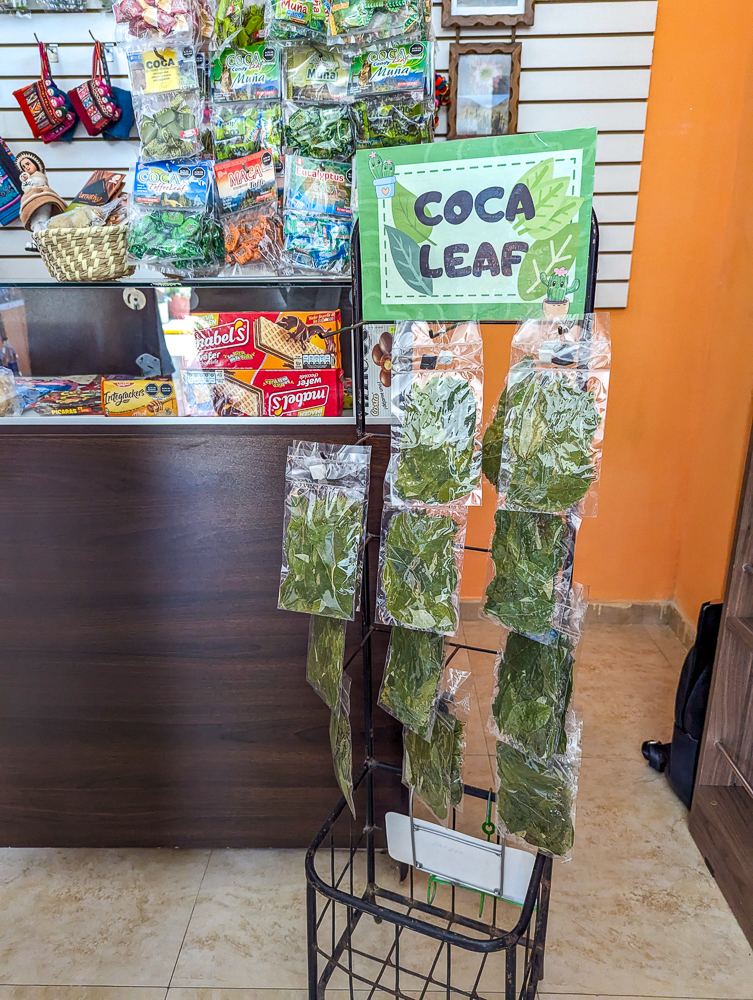
Altitude sickness in Peru: Access to oxygen
Since altitude sickness in Peru is largely the result of decreased oxygen, you may be wondering if you’ll have access to oxygen in Peru in case you need it. Here’s what I learned on my recent trip:
Most hotels at higher elevations have oxygen tanks. I saw these at my hotels in Puno (Lake Titicaca), Cusco, Ollantaytambo, Aguas Calientes, Arequipa, and in the Colca Canyon. I never needed them, but I liked that they were there.
You can buy Oxyshots everywhere. Oxyshots are small portable oxygen canisters. You can think of them as “fun-sized” if you consider living to see another day “fun.” Even though you’ve been told your whole life to never huff anything from a can, here we are.
I saw these for sale at convenience stores around Peru as well as available for purchase at several of my hotels. Apparently you can buy them on Amazon too but they’re expressly prohibited on airplanes, so don’t even try to bring one with you. (Luckily, airplanes already come with their own oxygen tanks and, should you experience a loss in cabin pressure, an oxygen mask will drop down in front of you. I think you know the rest.)
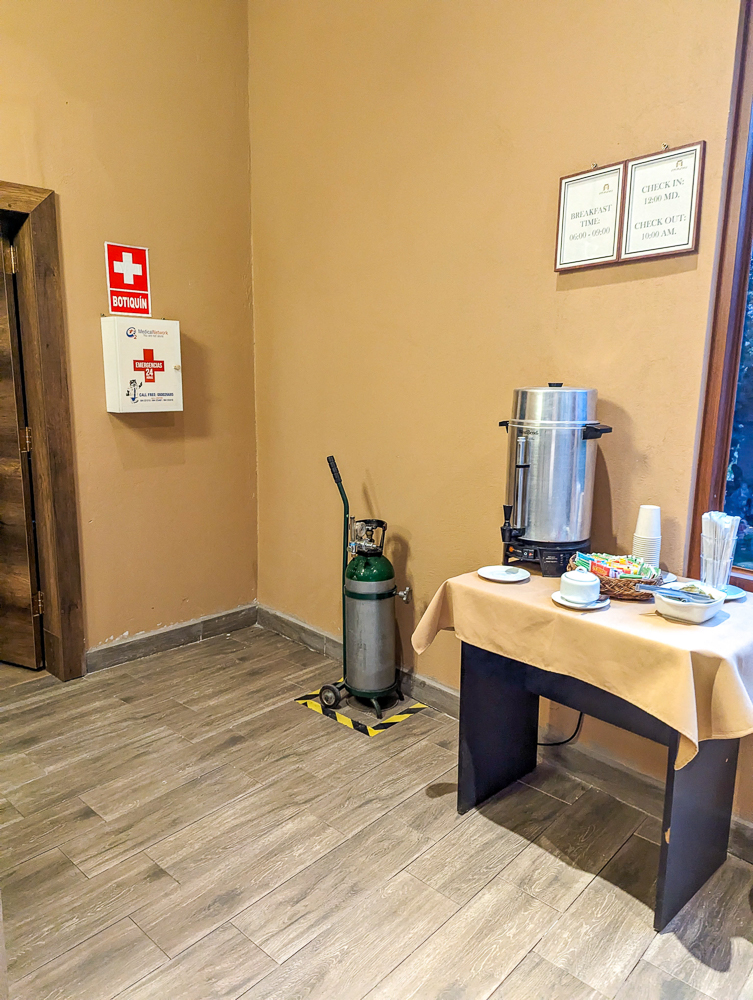
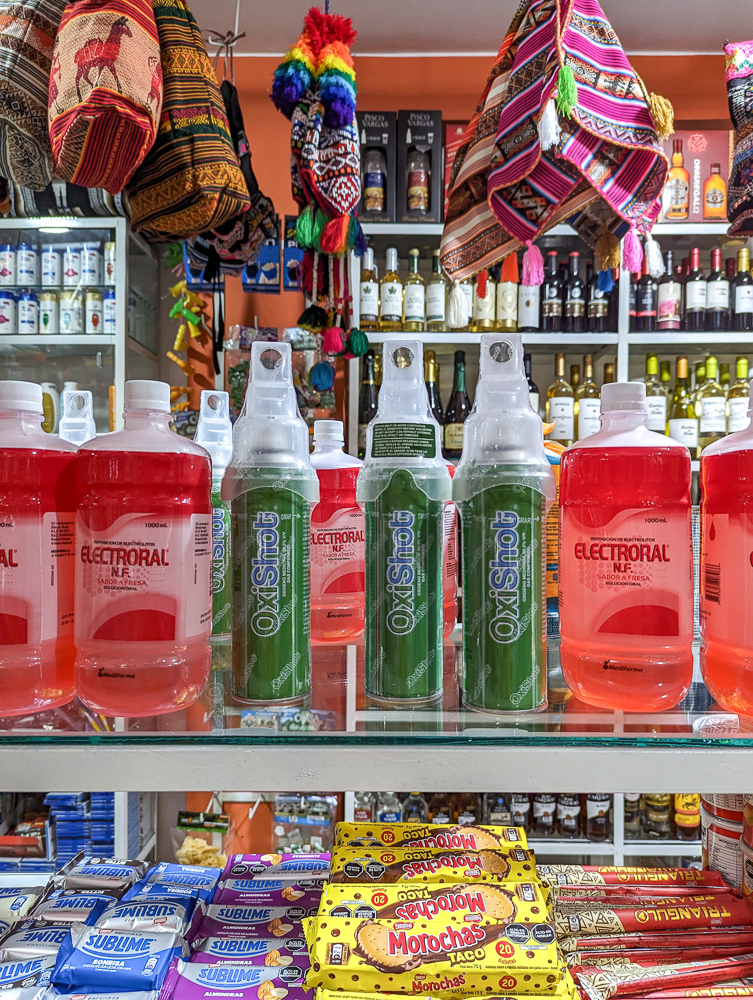
Altitude sickness and Machu Picchu
If you go to Peru just to visit Machu Picchu, and you do so from a lower elevation location, altitude sickness will likely be an issue for you. However, if you arrive in Peru and ascend gradually to Aguas Calientes (the town from which you visit Machu Picchu), you shouldn’t have a problem.
For me, I’d already been in Peru for 10 days by the time I visited Machu Picchu. The five days prior I was in Puno (Lake Titicaca), Cusco, and Ollantaytambo. That means that by the time I visited Machu Picchu, I was already on my way down in elevation. Praise Pachamama!
Machu Picchu sits at an elevation of about 8,000 feet. So having just left Puno (12,556 feet) and Cusco (11,000 feet), I was already spoiled with oxygen when I headed out on the Inca Trail towards Machu Picchu.
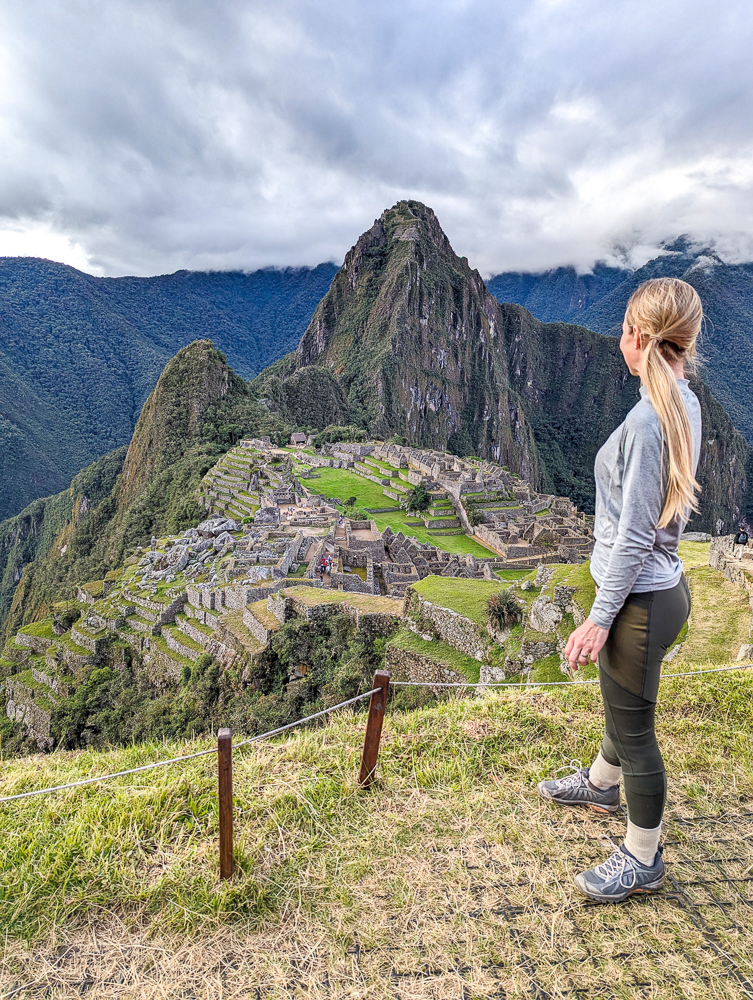
However, there are tons of visitors who fly straight to Cusco from Lima thinking they can visit Machu Picchu from there and it’ll be no sweat. There is, in fact, so much sweat. These people often end up having to skip visiting Machu Picchu because they’re too sick with altitude sickness. True story. What a waste.
I’m all about squeezing in as much as possible on a trip, but Peru is a destination that must be visited slowly.
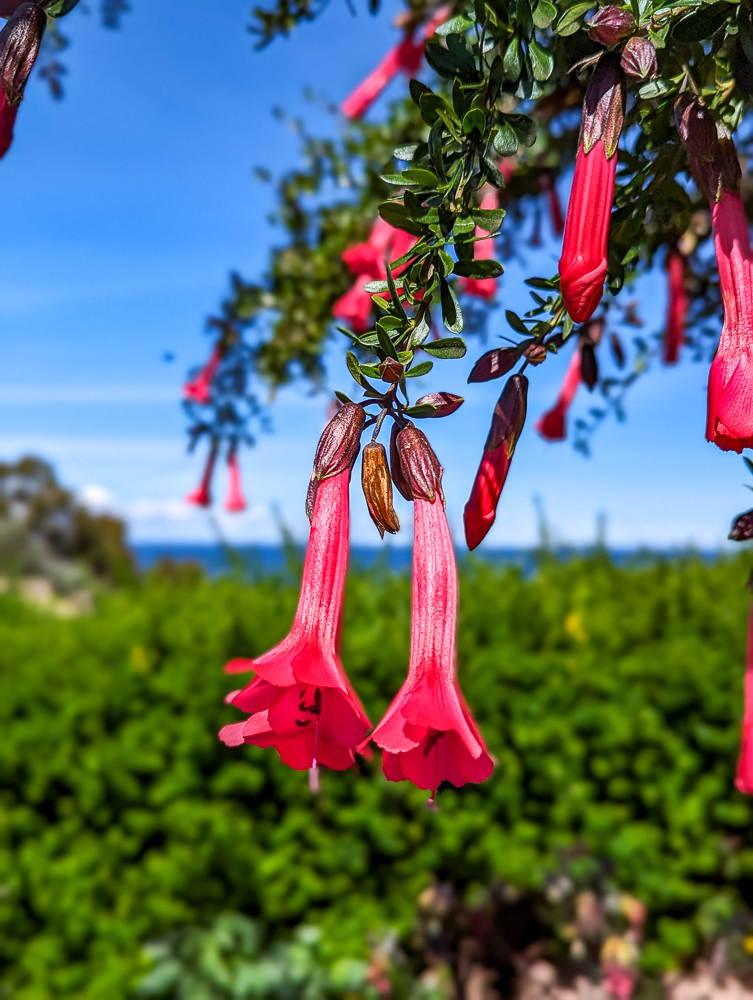
What to pack for Peru’s high altitude
Now that you understand the two most important factors in confronting altitude sickness in Peru – increasing your aerobic capacity beforehand and ascending gradually when you get here – here are a few things you should still add to your Peru packing list:
Blood oxygen monitor – Our tour guide made sure we monitored our blood oxygen levels each day and we used this little device to do so. It’s great for telling you what’s going on inside your body even when your symptoms don’t.
Liquid IV – Anything that helps you stay hydrated is great to pack. I always travel with a bag of Liquid IV hydration packets. (Açai berry and passion fruit are my favorite flavors.)
Refillable water bottle – An absolute must-have in Peru. You must stay hydrated; I can’t emphasize this enough.
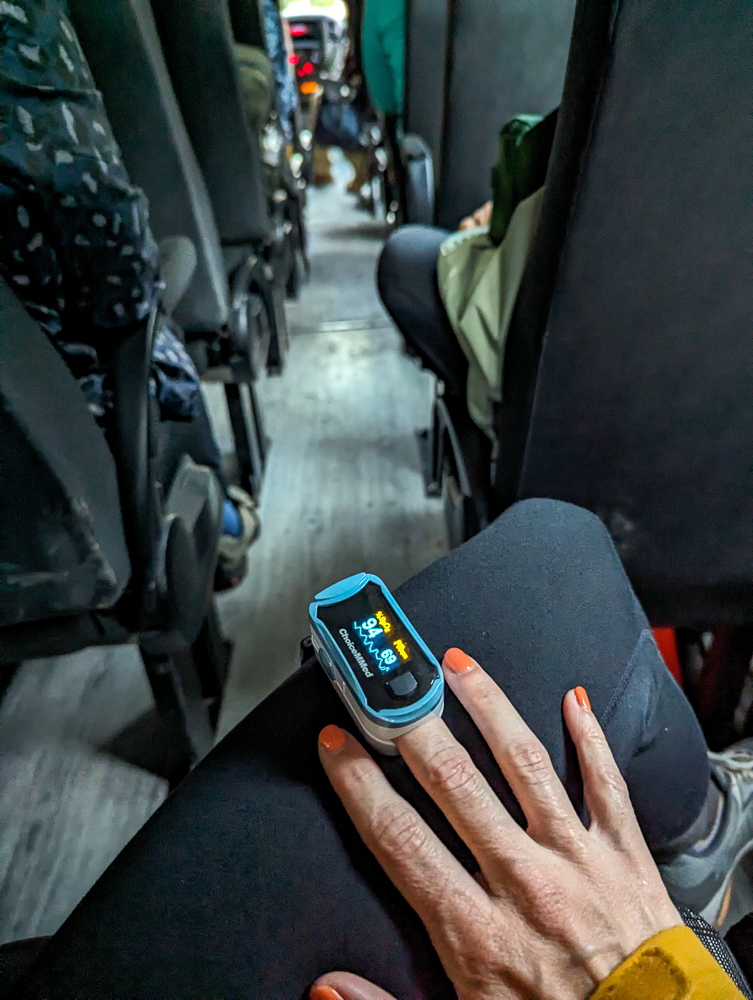
OTC pain relievers – I prefer ibuprofen but maybe you prefer Tylenol. Whatever you choose, definitely consider bringing some to deal with your milder symptoms.
Sunscreen, sunglasses, SPF lip balm – These won’t help with altitude sickness in Peru (per se), but higher altitudes do equal increased sun exposure. You’ll definitely need some good sunglasses and some hefty sunscreen while you’re here.
Peru culture guide – Again, it won’t help with your altitude sickness but these little books are absolutely worth the money in terms of learning the local culture and customs. I get one for every new country.
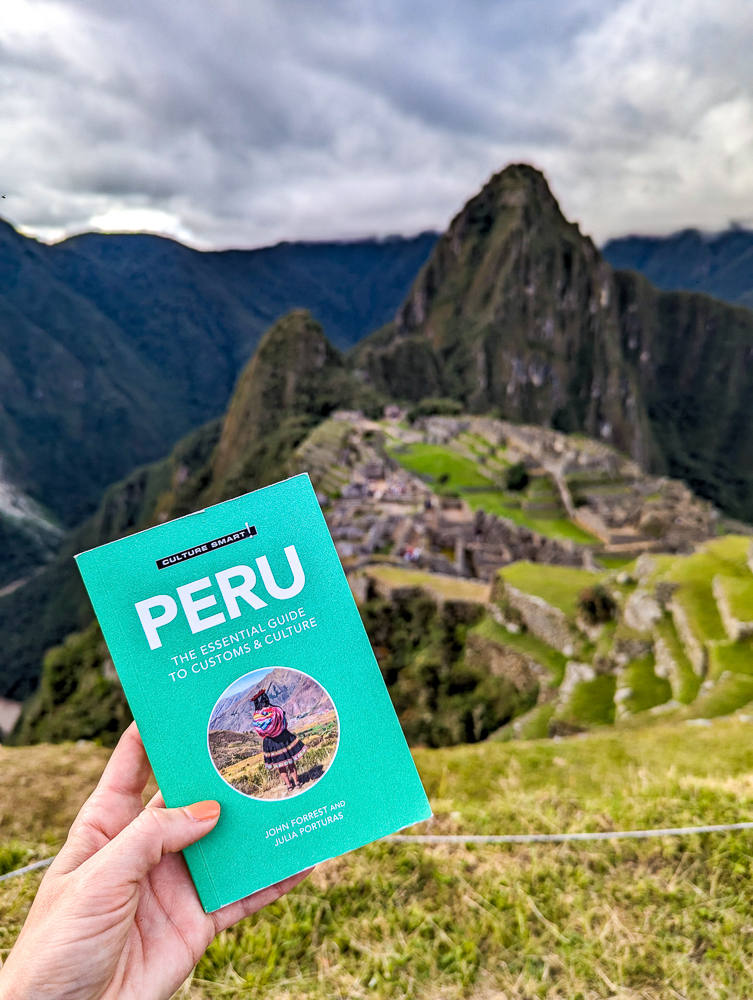
More info for your Peru trip
- Hotels: Head straight to Booking.com (my fave booking site) to find the best options in Peru. (But Expedia and Hotels.com usually have good deals too.) Or head to VRBO for the best rental properties.
- Rental cars: Check out the best rental car deals here.
- Travel planning: Pick up a Peru guidebook and this must-have Peru customs and culture guide.
- Tours & activities: Check out the great Peru tour options here on Viator and Get Your Guide.
- Want to follow my lead? This is the exact Peru tour I took myself!
Like this post? Have more questions about altitude sickness in Peru? Let me know in the comments below. Have a great trip!

Save this info, pin this image:
